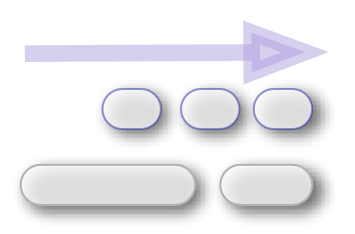Difference between revisions of "What is Scenario Thinking?"
Jump to navigation
Jump to search
m (rm spam) |
|||
| Line 2: | Line 2: | ||
<tr> | <tr> | ||
<td align="left" valign="top">[[Image:whatisscenarios.jpg]]</td> | <td align="left" valign="top">[[Image:whatisscenarios.jpg]]</td> | ||
<td align="left" valign="top"><br><br>Scenario Thinking is a way of thinking about - and anticipating the future, without pretense of being able to predict the future or being able to influence the environment in a major way. Scenario thinking always includes a number of possible future scenarios, thus preparing for many possible future events. Succesfuly used by many organizations and governments, Scenario Thinking has proven it's worth in the past thirty years. <br> This little introduction doesn't start to describe what Scenario Thinking really is. On this page there is room for many more, possibly contradictory, descriptions of what Scenario Thinking really is. | <td align="left" valign="top"><br><br> | ||
In a rapidly changing world, the ability for an organisation to critically review its assumptions on external developments and to incorporate thinking about external uncertainties in a structured way is of key importance. Scenario Thinking, introduced by Shell Group Planning in the 1970s, has evolved as a powerful methodology to enable groups to structurally anticipate change and incorporate external uncertainty into the internal decision making process.<br> | |||
The benefits and applicability of this process and methodology are broad and deep. Scenario Thinking establishes a thinking process that enables change anticipation and preparedness, and evaluation and risk assessment across possible environments. Every decision making context – product development, marketing, finance, investment, strategic planning, human resources, policy – faces the challenge of responding to external factors, be they economic, social, political, technological or environmental. Scenario Thinking informs decisions by evaluating them in the context of possible futures.<br> | |||
Scenario Thinking is a way of thinking about - and anticipating the future, without pretense of being able to predict the future or being able to influence the environment in a major way. Scenario thinking always includes a number of possible future scenarios, thus preparing for many possible future events. Succesfuly used by many organizations and governments, Scenario Thinking has proven it's worth in the past thirty years. <br> This little introduction doesn't start to describe what Scenario Thinking really is. On this page there is room for many more, possibly contradictory, descriptions of what Scenario Thinking really is. | |||
</td> | </td> | ||
</tr> | </tr> | ||
Revision as of 11:49, 14 February 2006
A Scenario Cycle is a presentation of a full scenario cycle, from articulation of the focal issue to the way scenarios are used to change an organisation and to transform strategic uncertainties from liabilities to assets.
A sequence of steps however is not thinking process. This cycle is simply a sketch of scenario process, rather than a thinking template. The world is complex and complex situations require complex representation.
